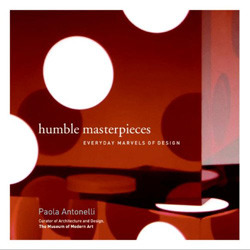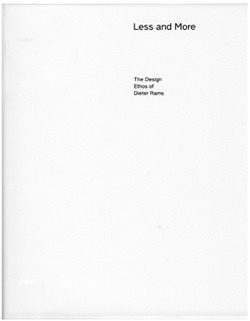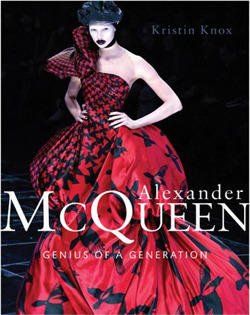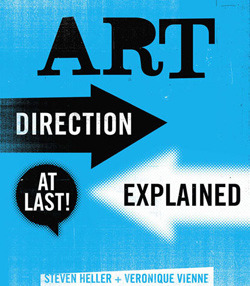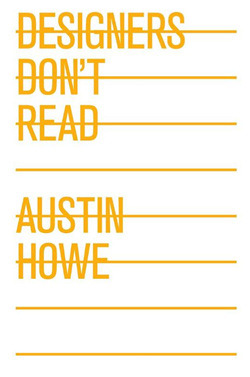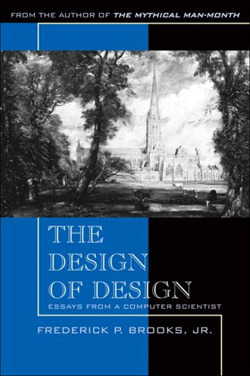Besides being a great place to meet attractive single people, bookstores are one of the best places to visit when you want to get inspired. This year I read a number of books about visual design – typography, grids, color, etc. – but also a bunch that were about design in other disciplines. It’s been a great way to get new ideas and perspectives on the work I do every day. Below are the seven non-web design books I read this year that made me a better web designer.
Humble Masterpieces, Paola Antonelli
This book is a reminder of a fact that’s easy to overlook: everyday objects are designed objects. From Q-Tips (1923) to the ice cream cone (1896), zippers (1913) to bottle caps (1892), the best designed objects seem almost inevitable, becoming part of our human experience. This book made me see that the genius of design is everywhere.
Find out more about this book.
Less and More: The Design Ethos of Dieter Rams, various authors
The design of Apple’s products (which are almost popular enough to be “everyday objects”) owe perhaps their biggest debt to the work that Braun did under the guidance of Dieter Rams. For 40 years, Rams led a design team that turned out products that are timeless in their elegance and simplicity. Rams’ ten principles of good design are widely known, and this book provides a number of additional insights into his process and philosophy. This one is my personal favorite: “limit everything to the essential but do not remove the poetry.”
Find out more about this book.
Alexander McQueen, Kristin Knox
In contrast to the longevity and restraint of Rams work, Alexander McQueen’s relatively short career was more like that an experimental artist. His work was transgressive and outlandish, but at its core showed a mastery of the classic forms of design. The voice that spoke through McQueen’s work was brilliant and deeply moving, and this book is a short tour through some of his most spectacular pieces. This book inspired me to stretch myself as a designer and seek out new ways of expressing my ideas.
Find out more about this book.
101 Things I Learned in Architecture School, Matthew Frederick
For months, I saw this book whenever I walked into a bookstore. I wish I had read it sooner. Frederick’s advice is targeted at architects, but is valuable for anyone who designs and builds in any medium. Thing 15 is about the concept of parti, which is “the central idea or concept of a building.” Thing 52 states that “an appreciation for asymmetrical balance is considered by many to demonstrate a capacity for higher-order thinking.” Thing 96 is one of my favorites: “Summer people are 22 inches wide. Winter people are 24 inches wide.” Keep this book near your desk.
Find out more about this book.
Art Direction Explained, At Last!, Steven Heller & Veronique Vienne
“What do art directors do, exactly?” This book is a funny, inspiring, visually impressive tour through what it means to work alongside designers, clients and other stakeholders, guiding and directing visual design solutions. It gives insight into the ways different designers think through problems, and advice on how to deal with the inevitable disagreements and disappointments that come with designing for clients. It made me feel better about the fact that sometimes the best solution isn’t the solution that works.
Find out more about this book.
Designers Don’t Read, Austin Howe
Austin Howe isn’t a designer, he just loves to talk about design. In 42 short essays, Howe gives his opinionated and passionate take on the current state of design in advertising and communications. He has a deep appreciation for the history of design and argues that the best designers can and should have a huge impact on the work being produced by their companies and agencies.
Find out more about this book.
The Design of Design, Frederick Brooks
This was the most important book on design I read this year. Brooks (author of the classic The Mythical Man-Month) bluntly states his disagreement with certain ways of designing (“Requirements proliferation must be fought, by both birth control and infanticide.”) and offers pragmatic advice for better ways forward (“For most human makers of things, the incompleteness and inconsistencies of our ideas become clear only during implementation.”). This book is essential.
Find out more about this book.
What design books inspired you this year? Let us know in the comments.
